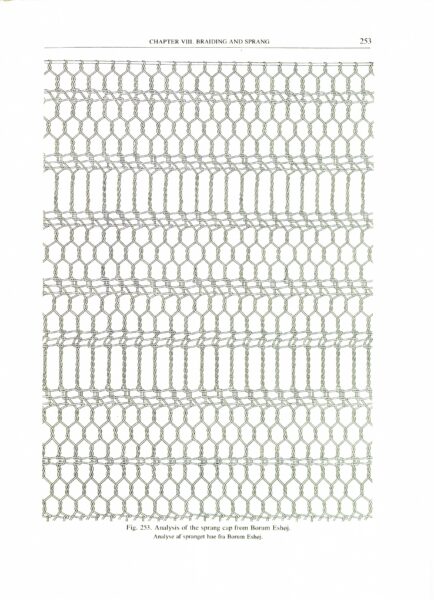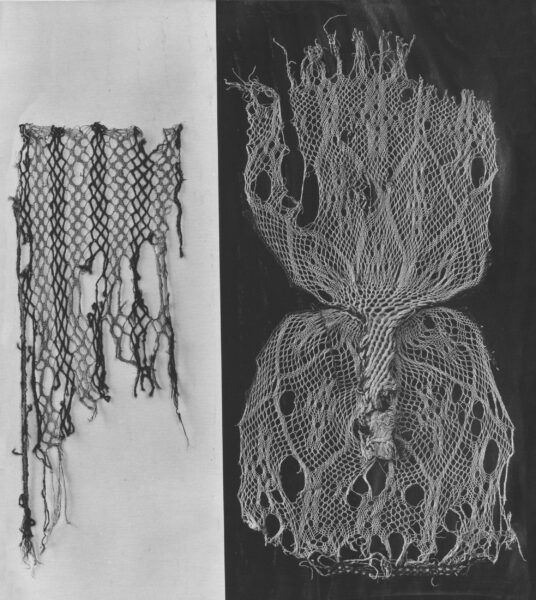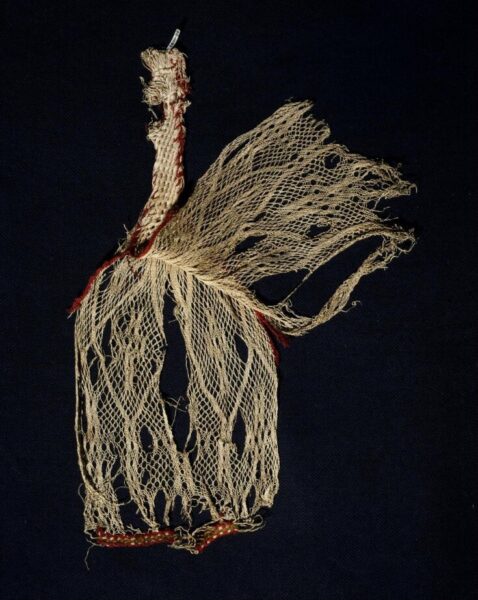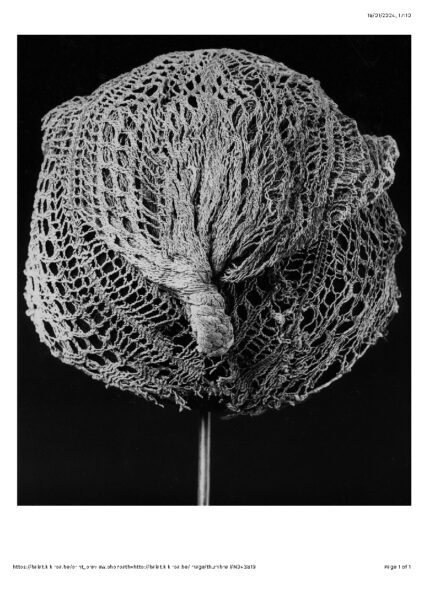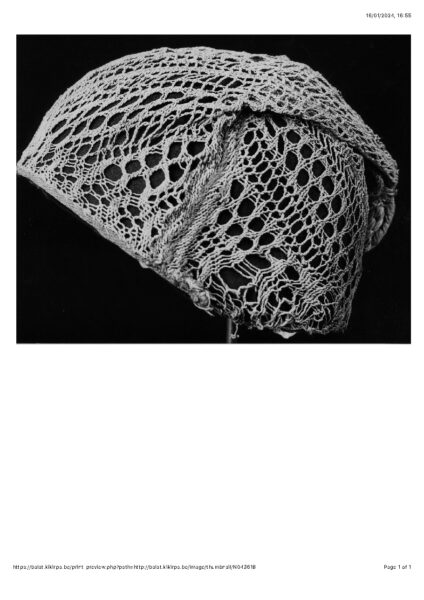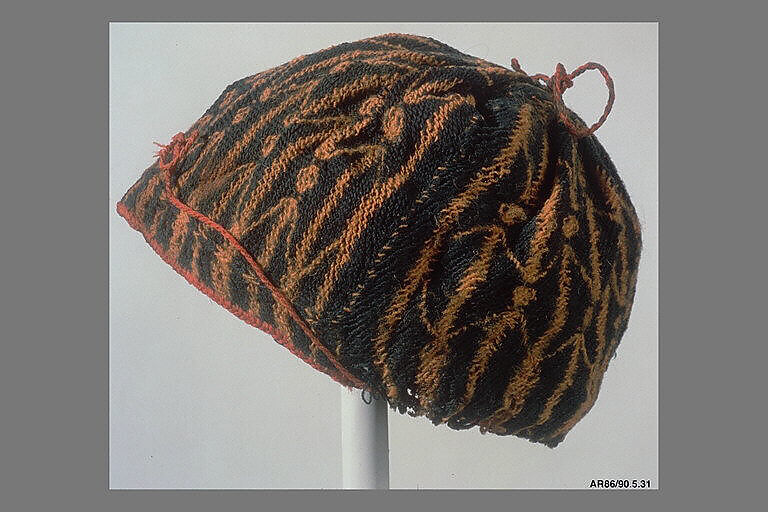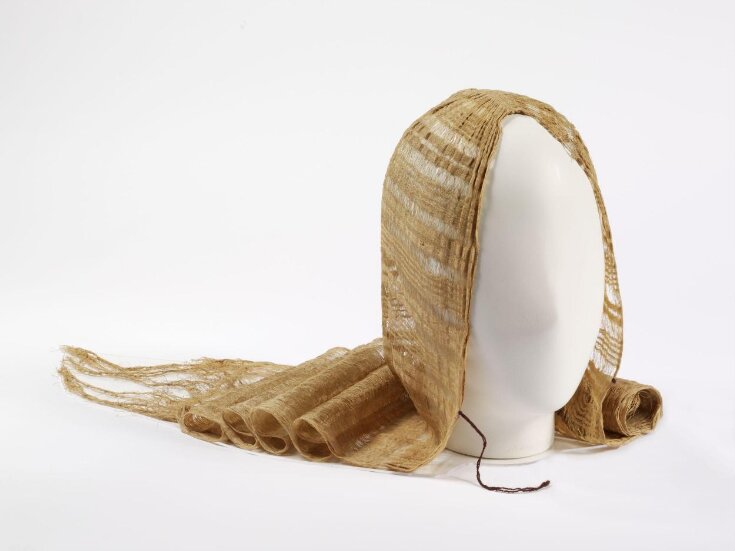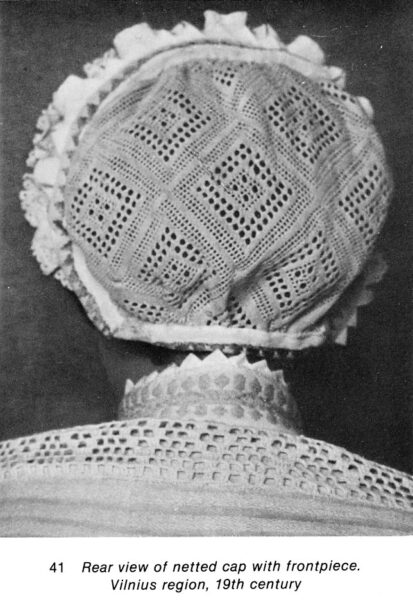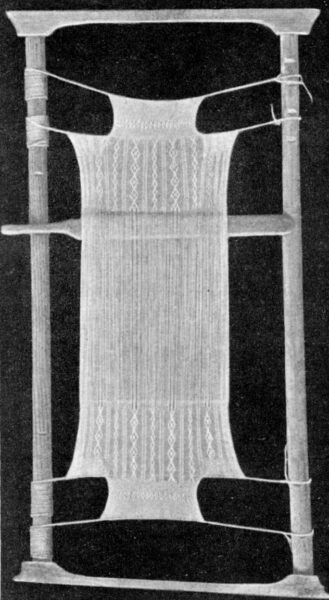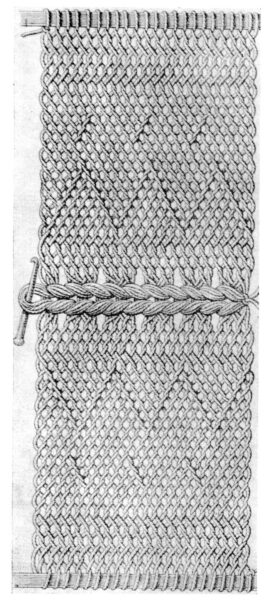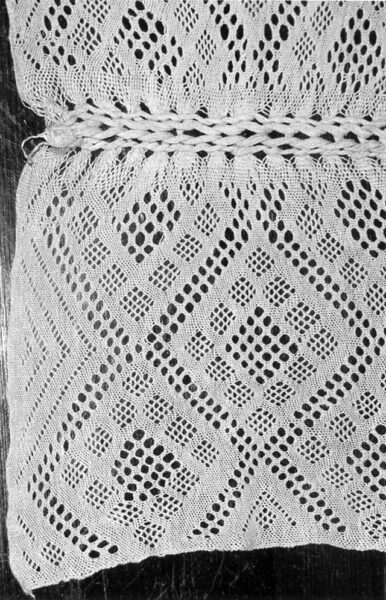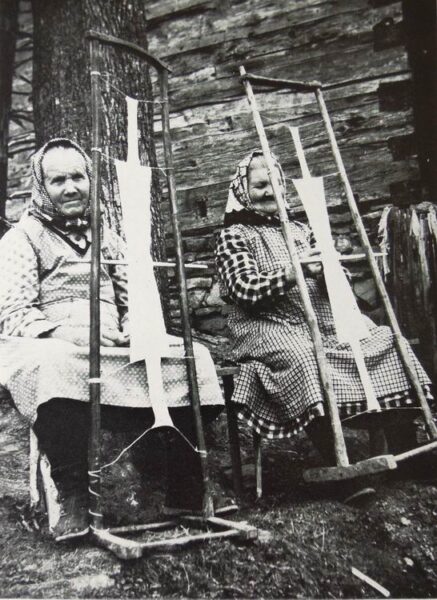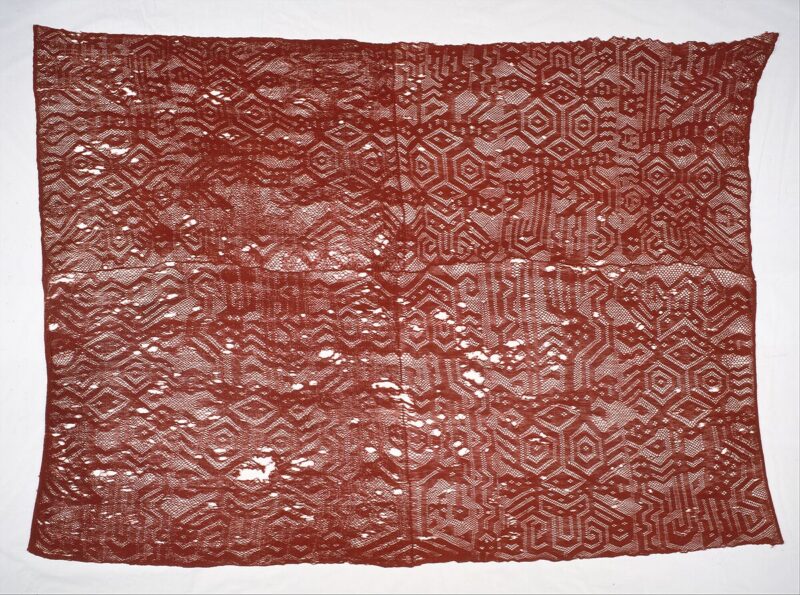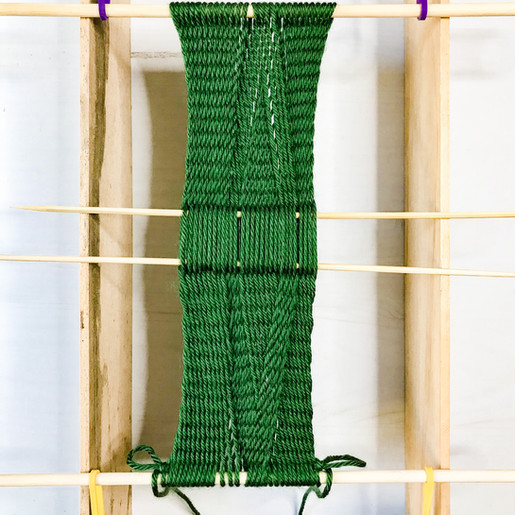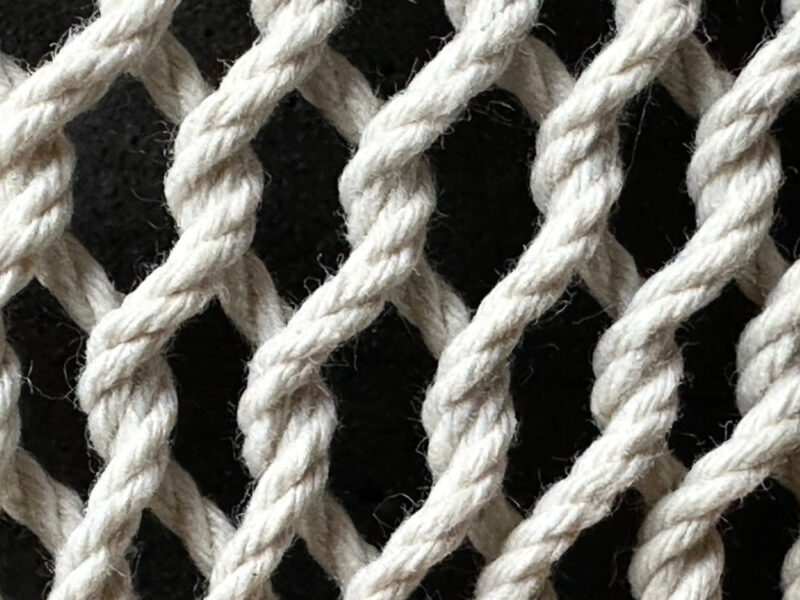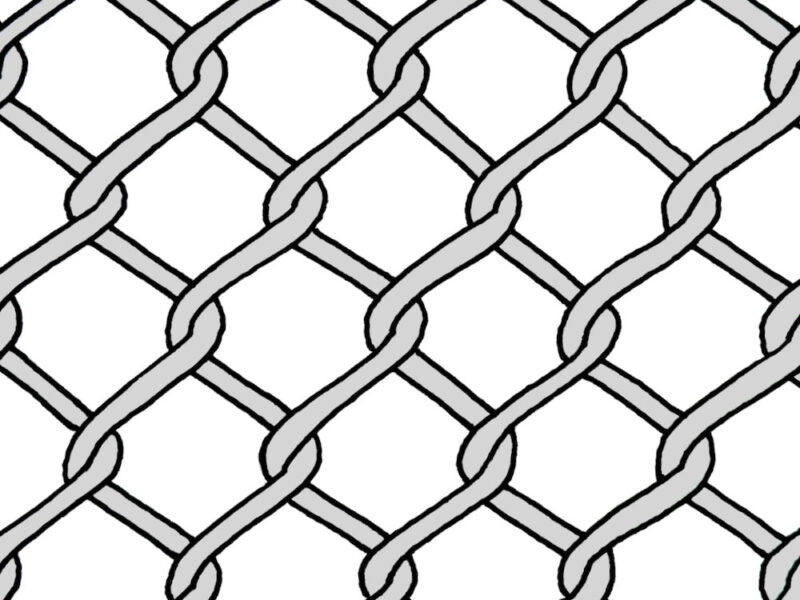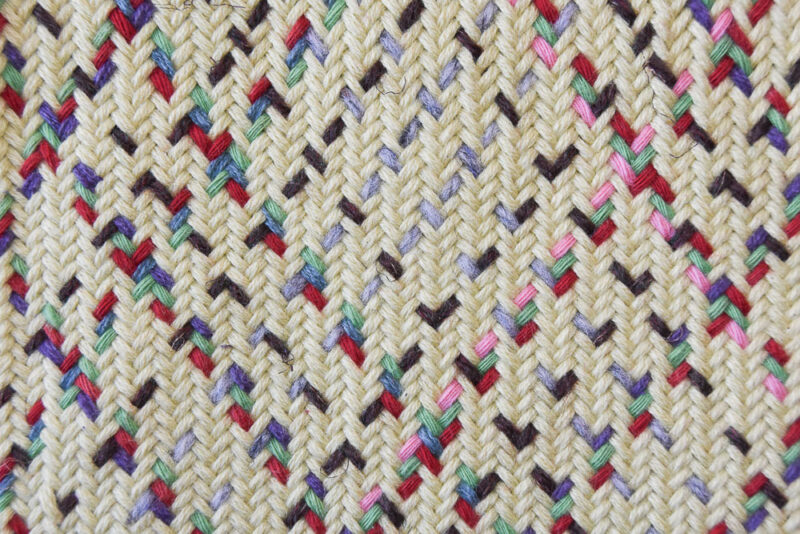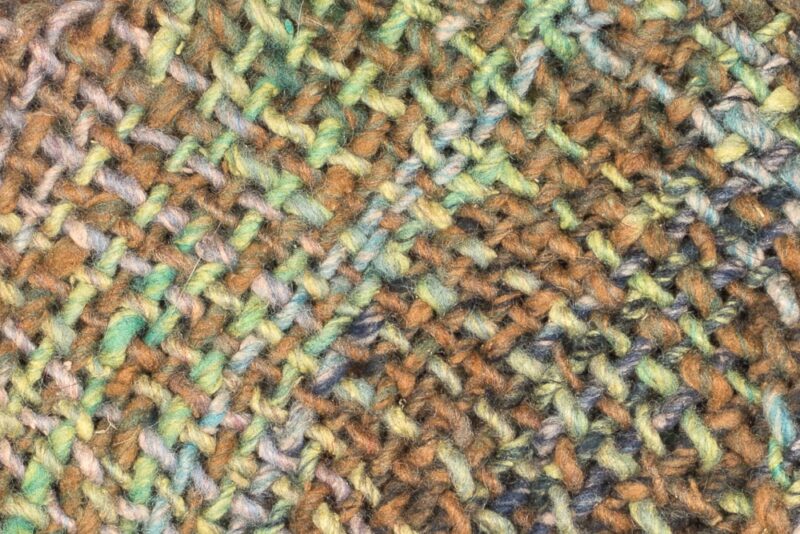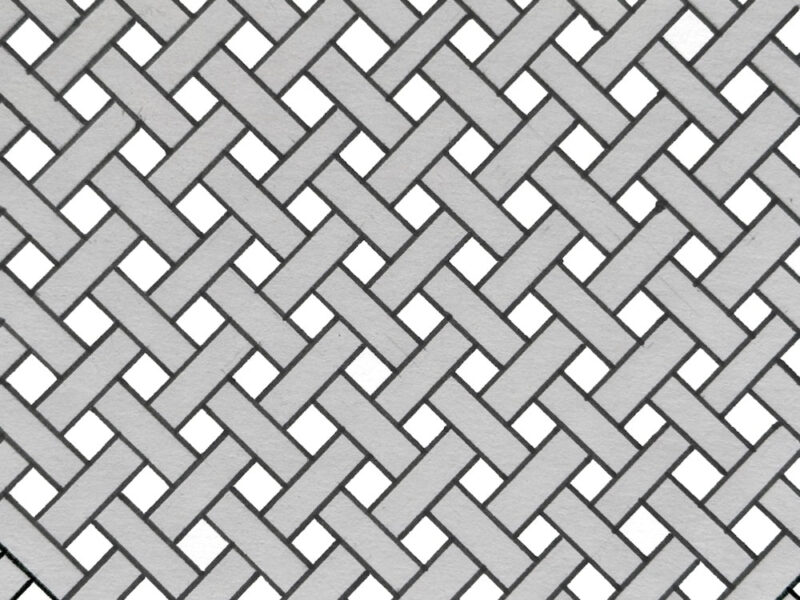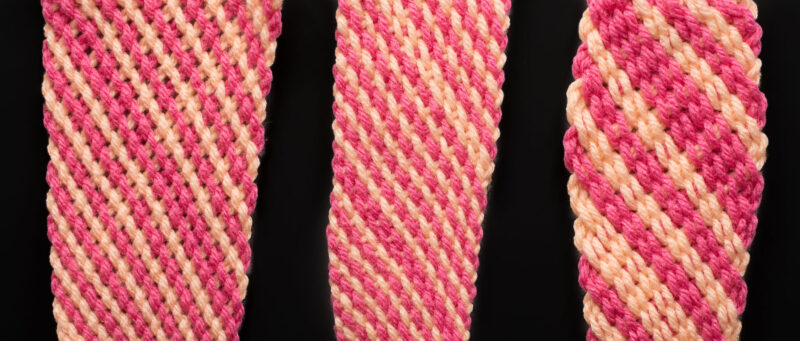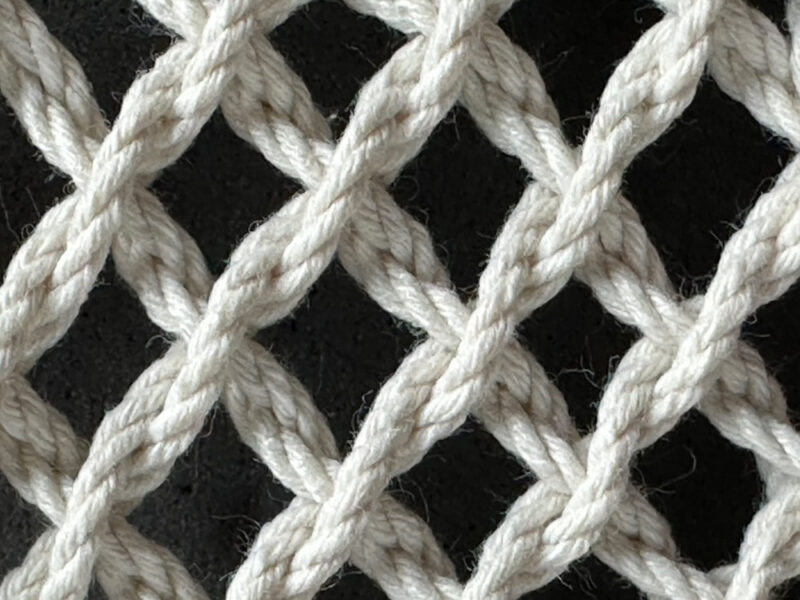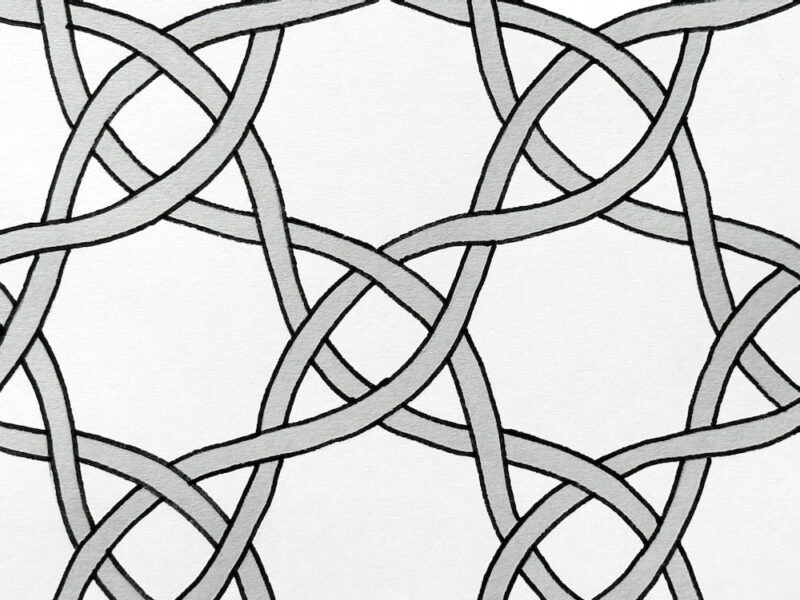Sprang
SOFT TOOLS / Twining
Sprang is an ancient and widespread textile technique, based on interweaving warp threads tightened on a simple loom. That’s why it was also called ‘braiding on a (standing) loom’. The more particular name ‘sprang’ found its roots in Scandinavia and means ‘an open work textile’. Although sprang was known throughout the whole world – from North-Eastern Europe over the Middle East to South America, it almost disappeared at the end of the nineteenth century. That’s why researchers wrongly associated techniques such as ‘netting’, ‘lace’ or ‘looping’ to objects made through sprang.
Unlike weaving sprang only uses warp threads, and no weft threads. These are interlaced and passed over each other using your fingers. In this sense, it reminds of the children’s game Cat’s Cradle. If you braid a row in the upper half of the frame, it also appears mirrored in the lower half. The work continuously grows inwards from both sides. In the middle of the mesh, where both halves meet, it is secured against unravelling by a simple crocheted chain or by merely passing a piece of yarn through it.
Although the technique has almost disappeared today, Soft Connection Lab wants to bring it back to attention. From the three different techniques, we opted for the one called interlinking, as it is the most versatile one. In an enlarged version, the technique perfectly fits the contemporary design need of being able to quickly disassemble a structure and give a new life to the materials. Within the context of Soft Connection Lab sprang also makes a multihands-application possible, collaborating on the same piece with different people.
ROOTS
Sprang is more than three thousand years old and has been used almost everywhere in the world. In the second half of the nineteenth century, different sprang artefacts were found. In the Danish town Borum Eshöj archeologists discovered a hairnet from around 1400 BC, while wonderfully elaborated and patterned head covers and bags in wool and linen were found in Coptic tombs in Egypt dating back to 400-700 BC.
While experts in both cases referred to the objects as ‘knitwear’, ‘lace’ or ‘linking technique’, close examination made clear this assumption was not correct. The ‘errors’ in the knitwear of the hairnet, which repeated mirror-like on both sides of the central line of the fabric, revealed the technique as being sprang. In the other case, the hands-on imitation of the Coptic fabrics with the looping technique made the differences clear. As the scientist, called Louise Schinnerer, was studying traditional fabrics such as long belts and women’s caps in Ukraine at that time – made amongst others through sprang, she could unveil sprang as the applied technique. She learned the technique herself from the local Ukrainian woman.
Although it was almost entirely unknown by the end of the nineteenth century, sprang was preserved in a few isolated areas as part of the local folk tradition. Researchers found evidence of sprang in amongst others Spain, Croatia, and East-Northern Europe, in the Middle East, Northern Africa, and South America. In some of these countries sprang is still used today. In Mexico hammocks are made with the technique, while in Pakistan they’ll make even clothing with it.
TRADITIONAL APPLICATIONS
HAMMOCKS
What started 3.500 years ago, is still practiced today: the indigenous Maya of Central America weave hammocks using sprang as a technique. At first, the Maya developed the hammock as a comfortable and safe alternative to sleeping on the ground. For over thousand years, Maya Indians have used hammocks as beds. From their conception to their death, the hammock played a crucial role. Thanks to the inherent characteristics of sprang, the hammocks could expand to any body shape or size.
By the time of the Spanish conquest (1519-1521) hammocks were made using fibers from the Hamac tree. Today, mostly cotton fibers and nylon cords are used to create hammocks with sprang. The Hamaca Maya of Yucatan is considered to be the finest of its type in the world. Each hammock is made out of two miles of cords and takes an experienced weaver 40 to 90 hours of work. The hammock combines a soft touch, with an amazing strength, capable of holding hundreds of pounds. While they stretch out as long as 4,5 meters, they fold up into a light compact bundle, which is smaller than a pillow.
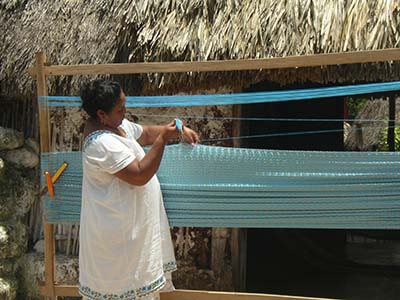
FROM CAPS TO BELTS AND MANTELS
Although they were not in touch, different communities in different regions spread over the world used sprang as a technique to create the same kind of accessories. Bonnets, belts, and veils made using sprang were not only found in Czech Republic, Slovakia, Lithuania, and Denmark, but also in Egypt. As lots of women used to cover their head, simple veils or the edges of scarfs and shawls were used for this purpose. When they died, the headwear was for example placed over the eyes.
In Lithuania sprang caps were called kykai. They were made by using two sticks for the warping: one was fixed at the ceiling, and the other to the floor. In the center of the warp the adjacent threads were linked together according to a preconceived pattern. Two caps were plaited at once: one up, and one down. Or one being the positive, and the other the negative. This resulted in a very elastic, breathable material. When ready, the textile was taken off the frame, cut into two caps and finished. Thanks to the open work on top, the structure was able to expand to contain all the hair. Besides it had a pleasant design and enabled the head to breath. The sprang caps combined the social requirement of married women to keep their hair covered with a reasonable comfort. When going out in public, a kerchief was worn over the kykai.
In Czech Republic and Slovakia sprang is sometimes called ‘self-twisters’ and the woman were called ‘veil-makers’. The name self-twister demonstrates the typical quality of the smooth sprang fabric after it was removed from the loom to twist itself in spirals. This quality could be welcome for veils which fell loose from the top of the high women’s bonnet. However, other kinds of veils – made from cotton, wool, or silk, were probably also made by braiding on the loom.
In Peru some man’s cloak-like garments were found. The mantels were used during Pre-Columbian times (2nd–1st century BCE) and were continued to be made until long after the Spanish conquest of the 16th century. They mainly had a funerary function.
Watch & Learn
Sprang is a braiding – and not a weaving – technique, because only warp threads – or wires that are stretched in the length – are used. The threads are divided into a top and a bottom and are attached at both ends. Twining the threads around each other results in twists at the top of the work, but also at the bottom. You work from both sides towards the center. The tie-off in the middle of the sprang not only keeps everything together, but also makes sprang textile – in combination with the mirrored effect – easy recognizable for archeologists.
The technique offers three basic methods of braiding. Combining these basics principles, you’ll be able to create a variety of patterns.

Interlinking
As interlinked sprang is the most common and versatile, Soft Connection Lab focuses on this variant. While it has a high amount of horizontal stretch, there’s almost no vertical stretch. When stretched open, the interlinking threads form small diamond shapes. If you add a colored thread, you’ll be able to create a few patterns such as stripes or dots. If you want to reach more variation, you need to manipulate the threads. If you want to produce lacy patterns and designs, you’ll have to add holes to the textile.
Interlinked threads tend to have a slight slant when at rest. If this is left leaning, it is called S-twist. If it is right leaning, it’s called a Z-twist. This last one is like card weaving. By using both twists, you can create subtle patterns.
Interlacing
This method shows similarities to diagonal weaving, which can be found under the gesture ‘crossing’. In terms of gesture, it’s in fact closer to crossing than to twining. It creates a weave which is like obliquely laid woven linen. It’s less elastic, but it’s very solid and can be cut and sewn.
Interlaced sprang is created by working alternating rows of S-twist and Z-twist. The resulting fabric is identical to weaving, but it’s done on a slant and without a weft thread. It can be done one thread over one thread or grouping more threads at the same time. The last method results in a kind of ribbing or herringbone pattern.
Interlacing can be done one thread around one another thread, or with multiple threads at the same time. Doing so, a kind of ribbing or herringbone pattern can be created.
Interlacing has less horizontal stretch then interlinking, though more than traditional woven fabric, and a bit of vertical stretch.
Intertwining
In both its structure and method, intertwining is quite different from the two previous techniques. The threads are worked in sets of four, with two threads twining around the other two threads. Each set of two threads moves diagonally.Threads turn around each other in such a way that one pair of threads intertwines with the other one. Doing so, the structure of the threads resembles the one of ply-split.
The result is a textile with a uniform appearance, which is elastic but less than the one created with interlinking. This offers further possibilities for creating patterns. Old Coptic textiles were made by intertwining some threads in a basic interlinking or interlacing braid.
